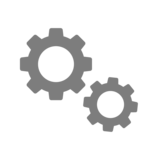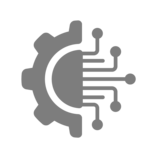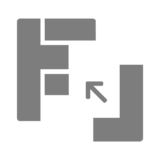HYDAC electric cylinders - HEZ series
Maintenance-free over the entire service life: with HYDAC, you can find the right electromechanical cylinder for your application. All from a single supplier. We cover everything - big or small! From simple components right up to custom engineering and complete drive systems. Get advice on selecting your HYDAC electric cylinder now.
Tailor-made to your application: we help you select your electric cylinder
We warmly welcome you to send us an enquiry. An expert from our team will be in contact with you shortly.
We can solve your drive challengeDiscover HYDAC's electromechanical cylinders
Are you looking for an electric cylinder for your application and a manufacturer who can set this up for you quickly?
Or would you like help in selecting an electric cylinder which is right for you or custom-made to suit your needs?
Do you often find yourself asking how you can use the latest technological developments to future-proof your machines and applications?
When it comes to drive solutions for your machine, we are always at the cutting edge of technology and will gladly share our know-how with you. There are now many things that can be made more simple, efficient and easier to maintain. Get started with HYDAC: we'll help you create future-proof machines!
Our solution: electric lifting cylinders from HYDACImplement linear movements simply and efficiently
HYDAC electric cylinders are maintenance-free throughout their service life and impress with their simple Plug & Play commissioning. We offer you the solution to your challenges, perfectly adapted to your requirements – our electric lifting cylinders come in a very wide force range and voltage range, from 1 kN to 500 kN, and in different designs. Tailor-made to your application.
We help you select, integrate and commission your electric cylinder. Find out more today.
HYDAC electric cylinders: your advantages at a glance
FAQ
What are electric cylinders?
As they are easy to integrate and need no maintenance, HYDAC electric cylinders (HEZ) allow simple implementation of linear movements. The HEZ function is achieved with the following set-up:
A (gear) motor drives the spindle via a coupling that is mounted in the bearing housing via ball bearings. The threaded nut converts the rotary movement of the spindle into a linear movement, as the nut housing is secured against turning with plain bearing guides. The piston rod is driven by the connection with the nut housing. The motor's direction of rotation therefore causes the piston rod to extend or retract. The spindle’s rotational speed and the pitch of the thread determine the translational speed. The inside of the HYDAC electric cylinder is protected against environmental influences by a sealing system. To mount the power unit, there is a pivot bracket on the bearing housing and a rod end bearing on the piston rod, for example.
What force ranges can be covered with HYDAC electric cylinders (HEZ)?
- HEZ-1 up to 7.5 kN
- HEZ-2 up to 25 kN
- HEZ-3 up to 70 kN
- HEZ-X up to 500 kN
Why are electric cylinders considered environmentally friendly?
Electric cylinders (HEZ) are “closed axes”. The risk of environmentally harmful leakage is eliminated. Unlike a hydraulic system, no oil is taken in from a tank and fed into the hydraulic cylinders through all kinds of components. In an HEZ, no fluid “medium” is used to transmit force. This function is performed by the motor, transmission and spindle. The rotational movement of the motor is converted into a linear movement. Only lubrication is needed to protect the components and reduce the internal friction. Damage to the environment can be prevented by using electric cylinders.
What data is needed for the configuration?
You can find all the information on this in our list of HEZ questions under "Downloads".
Is closed loop force control possible?
Yes, via the motor's current values and torque values. Depending on the requirements, external force sensors can also be used for greater accuracy.
Is closed loop position control possible?
Yes, this can be done via a rotary encoder (or angular position encoder) directly at the motor shaft or via external linear position measurement systems.
Is it possible for two or more electric cylinders to run synchronously?
Yes, both mechanically coupled synchronisation and synchronisation on the software side are possible.
Can an electric cylinder be used in S1 continuous operation?
Yes, however the performance data and cycle data are needed to allow suitable dimensioning.




